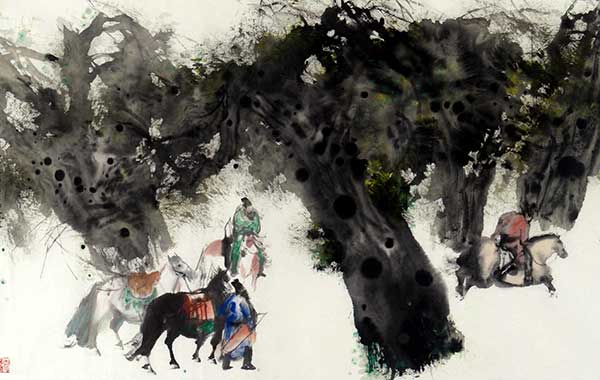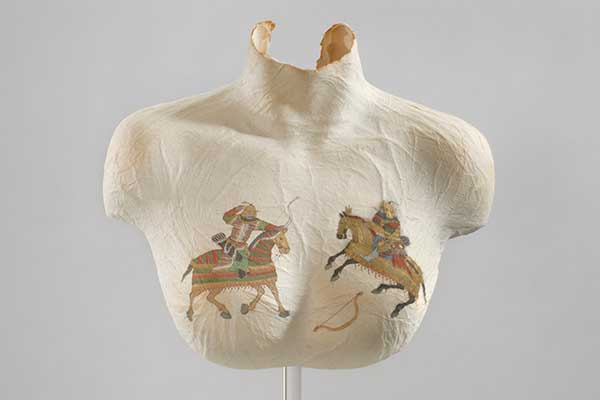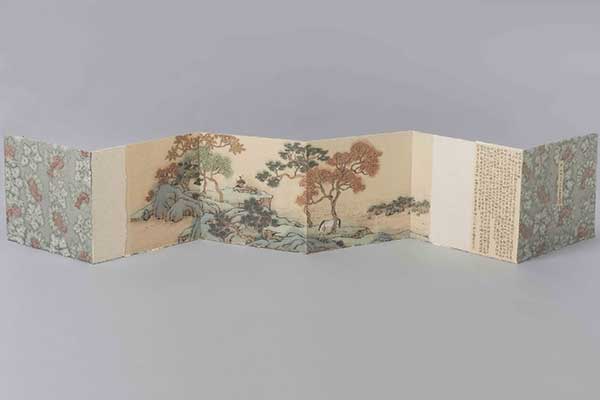
A traditional Chinese water-and-ink painting by Peng Xiancheng.[Photo provided to China Daily]
For many years, seeking to avoid comparison, artist Peng Wei has been unwilling to hold a show jointly with her father, Peng Xiancheng, who gained fame for traditional Chinese water-and-ink paintings decades ago. Now the daughter is finally stepping forward to present her works and her father’s together for the first time, confident she has developed her own artistic style.
Peng Wei, 41, and her father, 74, both do water-and-ink paintings. However, the father focuses on traditional Chinese paintings while the daughter paints on shoes, plastic bodies and clothes, a kind of installation art.
About 40 of their works are on display at Sotheby’s S2 gallery in Hong Kong. The ink art of two generations is “a special way to show her respect and love for her father”, says Peng Wei.
Kevin Ching, CEO of Sotheby’s Asia, says the father and daughter are very different in style and presentation of ink arts.

One of Peng Wei’s installations features a painting on a mannequin.[Photo provided to China Daily]
“They grew up in different times and developed their styles in different directions. We can feel the love between them and their works,” Ching says.
Peng Wei’s Letters From a Distance include several long scrolls featuring landscape paintings accompanied by calligraphy of letters translated from master composer Mozart’s letters to his father.
One traditional ink painting on scroll depicts a father walking in the night with his little girl and another shows a general in ancient times reading a letter from home.
“Mozart often wrote to his father, talking about his jobs and his girlfriend in letters. The close relationship between him and his father is like mine with my father,” Peng says.
“Before going to university, I never left my father. The letters are a metaphor to show me missing my father.”
Born into a family of artists, Peng started painting at 3. Wherever her father went, he would take her with him.

Artwork from Peng’s Letters From a Distance.[Photo provided to China Daily]
